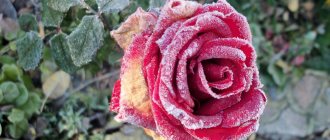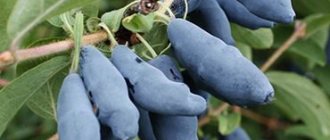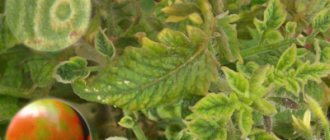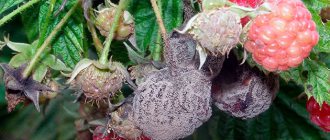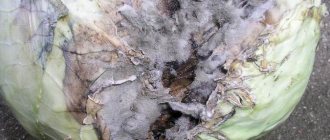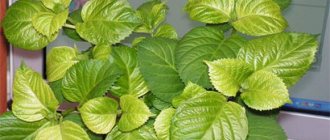What in a houseplant can be affected?
Orchid diseases most often manifest themselves on:
- Leaves. They can become covered with plaque both from the outside and from the inside. Spots, circles, darkening - all these signs indicate infection.
- Shoots, buds, flowers. They may also become silvery from plaque and may become rotten.
- On the soil and roots.
The affected areas will give instructions for action. If some part of the plant has acquired an incomprehensible shade, you should take a closer look at the rest of the flower. Turn over the leaves and look under them, check the root system, make sure that all signs of disease are found. You should constantly monitor the plant. It is early diagnosis that will save the orchid .
Fungal diseases
Lesions caused by various fungi are often found in indoor orchids due to the peculiarities of their structure and growing conditions. One pathogen can produce several toxins, so the manifestations of infection are different and largely depend on the species, state of the plant, and environment.
Related article:
28 types of Lavender for your garden: Description and secrets of growing
Anthracnose
Signs of the disease are more often observed on leaf blades than on stems. On the leaf, at its tip, dark spots with a yellowish edge first appear, then they grow over the entire surface. The fungi that cause their appearance are activated at high temperatures and high humidity against the background of poor lighting.
How to fight:
- when the first symptoms appear, move the flower to a dry, bright, ventilated room where it is warm, but not hot;
- cut off diseased areas, capturing about 2 cm of healthy tissue; if the lesion is large, remove the entire leaf;
- cut off all infected areas, to treat the entire plant use Zineb (0.4%), Thiram (3%), a systemic fungicide with the addition of a few drops of liquid soap and dishwashing detergent for better adhesion.
For any infection, when the lesions are cut, the sections are sprinkled with activated carbon powder, ground cinnamon or lubricated with an alcohol-containing liquid or fungicidal paste. The instrument is disinfected with alcohol or another antiseptic after each cut.
Fusarium
The fungal pathogen enters plant tissue through microscopic wounds. The disease manifests itself on unopened buds, peduncles, flowers and leaves. It looks like black, brown, as if depressed spots, on which whitish-gray mycelium with dots of pinkish fruiting bodies is visible. Small dots on the leaves also indicate the presence of infection.
Related article:
Frost-resistant and unpretentious - Canadian roses
Fusarium on the neck of phalaenopsis
Treatment:
- reduce the temperature, improve lighting, stop spraying, since the pathogen is transmitted in droplets;
- Treat three times with Zineb (0.4%), the interval between treatments is 5-7 days.
Rhizoctoniosis
The fungus first infects the roots, but the primary infection begins to appear on the leaves - they become thinner, become yellow, deformed, and young shoots develop poorly and look depressed. On the surface of diseased roots, the infection is present in the form of brownish putrefactive formations with white and brown dots - these are fungal hyphae.
The development of the pathogen is facilitated by excess moisture in the pot, the use of hard water for irrigation, spraying, and excessive amounts of fertilizer.
Treatment:
- trim and destroy diseased parts, isolate the plant;
- replace the substrate, pot;
- control fertilizer doses;
- use for irrigation Benomil, Fundazol, for spraying - Tsineb (0.4%), Tiram (1-3%).
Related article:
Cinquefoil / Potentilla plant: photos, types, cultivation, planting and care
Root rot
The pathogen is capable of parasitizing the entire plant. Purple, pink-purple spots of round or elongated shape appear on rhizomes and pseudobulbs. As they grow, they capture healthy shoot tissue, renewal buds, and flower buds. The pathogen enters the internal tissues through the roots and spreads very quickly - only three weeks pass from the moment of infection to the death of the flower.
On infected shoots and leaves, weeping brownish-red spots quickly grow, the leaf becomes yellow, becomes thinner, withers, and the edge of the plate acquires a grayish metallic tint. Putrefactive processes also begin on unopened buds, which turn yellow and fall off. After applying fungicides in the initial stage of the disease, the orchid can be saved, but the shoots then become deformed, the pseudobulbs shrink, and the roots die.
Related article:
How to save on planting material: 7 rules for collecting flower seeds
Treatment:
- to prevent the spread of infection, isolate the flower;
- cut off diseased areas, disinfect sections;
- spray three times and water with Fundazol (2% suspension), Benomyl or Topsin, the interval between treatments is 10 days.
To prevent root rot, plant and replant the plant in a new substrate and disinfect the drainage.
Core rot (crown)
The parasitic fungus poisons the young growing parts of orchids with strong toxins, penetrating into the tissues both between and through the cells. Increased humidity and accumulation of moisture in leaf rosettes lead to activation of the pathogen.
The disease manifests itself as problems with the leaves - small, randomly scattered weeping areas are visible on the outside, which then acquire a brownish-purple hue, sometimes with a yellow border along the edge. If you press on such an area, liquid will be released. Gradually, the necrotic tissue turns black and dries. Symptoms on shoots are similar.
Related article:
Varieties of geranium and pelargonium
If the infection accumulates inside the shoot, then outside, except for the fragility of the leaves, it may not appear. Pseudobulbs, rhizomes, and flowers become infected through the roots; brownish, weeping spots are visible on them.
Treatment:
- ventilate the room to reduce humidity;
- do not spray;
- cut off infected areas, disinfect sections;
- spray with Zineb (0.4%), for spilling the substrate, 1% Bordeaux mixture, 1% copper sulfate are suitable, you can dust with Tiram.
Black rot of orchids
The pathogenic fungus enters the pseudobulbs and stems through the roots. The tissues of the infected pseudobulb harden, wrinkle, then mummify, and the leaf softens and turns black. The rotting process most often begins at the tip of the leaf.
Black rot spores can destroy a plant in a short time. The disease takes hold of seedlings and young orchids especially quickly. The seedling begins to rot from the base. The infection spreads in cool conditions and high humidity.
Related article:
How to pinch petunia so that it blooms beautifully?
Treatment:
- increase the temperature, regulate the watering regime, do not spray;
- quarantine the sick flower;
- cut off rotting parts, process the cuts;
- immerse an older plant for half an hour in a solution of copper oxychloride (0.5%), copper sulfate (1-3%);
- All orchids growing in this pot must be immersed in the solution.
How to distinguish when it was sick and when pests appeared?
To determine the problem, you need to carefully examine the plant. The orchid may be susceptible to disease, virus, or insect attack. Only a visual inspection will give the correct answer as to what problem you are facing.
Signs of disease:
If dark dots, dark or brown spots (with or without rims) appear on the leaves, then this is rot.
- If the base of the leaf has turned yellow, shriveled, or the surface has wrinkled, this plant is sick from improper care. It can be cured by restoring the light regime and necessary watering.
- If root rot occurs, this is again a sign of poor care, most likely overwatering.
- If the leaves become limp, white spots appear on them - problems with the root system.
- If the orchids develop light and then brown streaks, which then merge into stripes, and the leaves turn yellow and fall off, this is a viral disease.
Signs of pests:
- If young shoots, flowers, buds change color, fall off, and silvery spots appear on the leaves, they are uneven - most likely these are insects.
- If there are white lumps in the leaf axils, these are pests.
- If the leaves have holes or uneven edges, the orchids most likely have snails.
- If the shoots or leaves are covered with brown growths and warts that are easy to remove, then these are also pests (scale insects and false scale insects).
- If the leaves become sticky, this is also a sign of the presence of harmful insects.
- If barely noticeable red dots move around the plant or the leaves and shoots have acquired a whitish tint, we are also talking about insects.
Pests and their control
Orchids do not get sick out of nowhere. The main cause of flower diseases are pests that have settled on the plant or in the substrate. By injuring the orchid, they allow viruses and fungi to enter the plant through damaged areas.
Various types of mites are considered the most insidious among orchidists . Why? It is very difficult to get rid of these pests, even if you know how to treat them, because... they have four stages of development:
- Egg;
- Larva;
- Nymph;
- Adult.
Stages of spider mite development.
The drugs sold in stores mainly act on adult ticks, which quickly become accustomed to the poison, so it will not be possible to kill them in one go.
There is no need to discount other parasites:
- Mealybug;
- Scale insects and false scale insects;
- Thrips;
- Aphid;
- Nematodes;
- Moths.
The following animals also live in the ground:
- Midges;
- Fungus gnats;
- Root mites;
- Springtails;
- Fools;
- Snails, slugs.
It is in order not to infect home flowers that all new plants must be treated with acaricides and insecticides.
You will find the most detailed information about orchid pests with photos and how to deal with them here.
You will get more information about the most common diseases and pests from this article.
How to deal with drought?
Before treating a plant for drought, it must be carefully examined. If there are rotten places, they need to be cut off, rubbed with coal or treated with an antiseptic.
- If the leaves turn yellow, wilt and begin to dry out, then you need to pay attention to the root system. Have the roots changed color and become thinner? This means that a drying orchid must be moved to a cooler space, watered and sprayed, cared for for several days, and monitored at the temperature to avoid overheating.
- If the leaves are limp, the plant has dried out and the roots have begun to rot, overwatering is possible. It is necessary to reduce watering of the plant and ensure that the soil is dry. If it becomes crumbly on top, you can water the plant again.
- If the roots have dried out and the plant has lost some leaves, this is a lack of watering. We need to restore the water balance. If condensation remains on the walls of the pot, water it early (watch for 7-10 days).
- An orchid can dry out from the wrong selection of fertilizers, namely, their excessive use.
If there is an overdose of nitrogen-phosphorus-potassium fertilizers, the orchid withers. To cure a plant, you need to change the substrate and strictly follow the fertilizer instructions. Most often, with symptoms of drought, the flower can be saved. The main thing is to start rehabilitation on time.
Watering
If the leaves of an orchid wither, one of the reasons may be a violation of the watering regime. The orchid grows in a pot with transparent walls. The roots participate in photosynthesis and deliver moisture to the leaves. Therefore, leaf lethargy occurs from prolonged drying out of the plant or excessive watering. If the plant is too dry in the summer, and even in dry air, the leaves will lose their tightness. To avoid creating a greenhouse effect, the room is ventilated. It is important that the roots dry completely between waterings. In a constantly wet substrate, root rot will begin and the leaves of the orchid will also wither.
What to do with lethargy?
Lethargic leaves are most likely due to insufficient watering . It is necessary to restore the regime; you can also soak the roots in a 0.1% solution of succinic acid (40 min.-1 hour).
If watering is excessive, you need to remove the plant from the pot and dry the roots. Then plant in looser soil. If overheated, move to a cool place. If lethargy occurs from root disease, then rotten and dried areas must be removed.
You will learn about what to do if the flowers of an orchid wither in our article.
Orchid
Dies
Due to complications occurring with the roots and leaves, the plant begins to wither. The question arises, what to do if an orchid gets sick? Need to:
- Know exactly what species the orchid belongs to;
- Determine on your own or ask on the forums what kind of misfortune happened to the flower;
- It is imperative to isolate the plant until complete recovery;
- Carry out treatment in accordance with the disease.
Stopped growing
It happens that an orchid slows down its growth or stops growing altogether. In this case there may be several reasons:
- An overfed and heavily stimulated plant was purchased;
- There are not enough nutrients - nitrogen in particular;
- The plant was attacked by pests;
- The orchid is sick;
- The conditions of detention do not meet the requirements.
An orchid may stop growing for various reasons.
In the first case, you just need to wait for the flower to adapt to your conditions. In the rest - determine the cause and take measures to eliminate them.
Read more about the reasons for stunted growth here.
Turns black
There are times when orchid leaves begin to turn black. There are reasons for this:
- Natural darkening. Plants that bloom very dark colors tend to tan in the sun. Some of them, if they do not get such a tan, will not bloom at all;
- Orchid disease. In this case, it is necessary to determine what disease the flower suffers from. It could be: Fusarium;
- Black spot;
- Black rot.
Read more about why an orchid turns black in this article.
Withers
The reasons for orchid wilting can be different:
- Frequent watering, the substrate does not dry out - the roots have rotted. It is necessary to remove the plant from the pot, cut off the rotten roots, sprinkle the cut areas with activated carbon or ground cinnamon, and let it dry. Plant it in a fresh substrate, correctly determining its composition, or plant it in an old one, and water only when it dries;
- Infrequent watering or incorrectly selected substrate . There are tribes of orchids that require more moisture-intensive soil. To eliminate the problem, you must either increase the frequency of watering or replant in a properly composed substrate;
- Orchid disease. Determine the disease and treat the orchid.
You can get more information about the causes of wilting here.
Dries up
The blooming beauty begins to dry out the buds for the following reasons:
- There is not enough light;
- Excessive lighting;
- Excessive or insufficient watering;
- Pests have settled on the flower;
- Orchid disease.
When leaves turn yellow and dry out, this could be:
- Natural aging of leaves;
- A recently purchased plant has an excess of fertilizers and stimulants;
- Mechanical damage;
- Insufficient watering, the plant begins to eat itself;
- Pests or disease of indoor beauty.
Dried phalaenopsis leaves.
If you see that your orchid is sick, what should you do? First of all, it is necessary to clearly determine what exactly caused this process. Make sure the plant is healthy and there are no tenants on it. Otherwise, take the necessary measures.
When it comes to flowers, adjust the lighting. Both lack and excess of light have a detrimental effect on flowering. In the first case, the orchid must be moved to a brighter place or additional lighting must be arranged. If there is a lot of sun, the flowers and leaves of the plant may simply burn. Adjust watering.
As for the leaves, you need to look at which side they begin to turn yellow. If the leaves dry out at the end, then this is either natural recycling, or the plant does not have enough water and nutrition - it is self-inflicted. It is necessary to water it with fertilizer , but without increasing the dose, and each watering is ¼ of the norm.
You need to take a closer look at the leaves turning yellow from the base:
- A new root is growing;
- Water has entered the leaf axil - remove the leaf by removing it from the trunk/pseudobulb and make sure that underneath it is clean;
- The trunk/pseudobulb began to rot. This problem can only be solved surgically;
A plant overfed by suppliers, finding itself in unusual conditions, begins to dry one leaf after another - throwing leaves. Sometimes this process can stop on its own, more often the plant dies.
Read more about the causes of drying out in this article. You will get the most detailed information about what to do if your orchid dries out from this article.
Turned yellow
Of course, orchids are tropical plants and the sun should not scare them.
However, quite often our, especially spring, sun can burn the plant completely.
This happens because the flowers wean themselves from the sun during our long winter.
Attention! To prevent the plant from getting burned, it must be accustomed to the sun gradually, shading it at first, or move the flower to another window where the sun only comes in the morning or evening. Phalaenopsis of the violacean group are most susceptible to this.
Another reason for flower yellowing is iron deficiency . In this case, it is necessary to spray with fertilizer with a high iron content, for example, Iron Chelate, a couple of times with a break of 10-14 days.
Read more about yellowing of orchids here.
What to do in case of rotting?
If the roots rot, the cause may be fungi (most often they appear due to poor lighting), keeping the plant too wet, excessive use of the substrate, or pests.
If the roots are brown, feel empty to the touch, water may leak out of them, or the top layer is easily removed, all this indicates rotting.
How to treat? If the root is not entirely damaged, then the “sick” part is removed and the incision site is disinfected. If damaged at the base, it is removed completely. They are cut with a strictly disinfected instrument. If a lot of roots are removed, then the plant should be placed for a couple of minutes in a weak solution of furatsilin or manganese, then dried.
If at least one healthy root remains, then the plant is replanted , placed in a warm place in good light and cared for as if it were healthy. For an orchid to grow, a root of 5-6 centimeters is enough.
If the core of an orchid is rotting, then first you need to rule out fungal or bacterial infections. The plant is isolated from other flowers, damaged areas are removed, treated with brilliant green, then a fungicide (for fungal diseases) or a bactericide (for bacterial diseases) is used.
If the rot occurs due to moisture, it is necessary to completely cut out the rotting area, as well as the leaves (the fewer of them remain, the greater the chance of the plant to survive), disinfect the cut areas with brilliant green or activated carbon and constantly check the plant - if rot is detected again, you will have to cut the flower again .
What are non-infectious diseases of orchids?
Often, diseases of indoor orchids do not occur due to infection, but as a result of improper agricultural practices. They may suffer from a lack or excess of illumination, sunburn, incorrect spectral composition of light, low air humidity, imbalance of temperature conditions, unbalanced nutrition, use of pesticides, etc. All these cultivation errors can cause the appearance of various spots on the leaves, drying out of shoots, and death roots, refusal to bloom.
See what non-infectious diseases of orchids look like in these photos:
Often, orchid growers are faced with the sudden appearance of depressed white and black spots on the leaves of phalaenopsis, which are considered a manifestation of a viral infection. In fact, the root cause of the appearance of such spots is a decrease in air temperature to 4-6 ° C (short one-time or repeated repeatedly over several nights in a row) or spraying the leaves with cold water.
Very light leaves indicate chlorosis, which is observed in epiphytic orchids in the case of a lack of iron, which is absorbed only in an acidic environment and becomes unavailable to the plant if watered with hard water, when using carbonate substrates, as well as when there is an excess of phosphorus in fertilizers.
When treating this disease of domestic orchids, the manifestation of chlorosis can be eliminated by adding iron chelate to a slightly acidified solution of macrofertilizers and periodically feeding plants with microelements.
Colorless, weeping spots may appear on the leaves of frozen orchids that were briefly kept at temperatures below 0 °C. If frostbite has not affected the tissues of the stem (in monopodially growing orchids) or rhizome (in sympodially growing orchids), areas with weeping spots should be removed immediately.
The other extreme of extreme temperature exposure is sunburn. Spots from instant burns remain on the leaves until they naturally die; unlike spots caused by pathogens, they do not increase in size.
But sometimes deformation of tissues is caused not by the sun’s rays, but by constant high temperature, when a closed greenhouse is left on a sunny window. Direct sun may not hit the leaves of the plants in it, but when the temperature in the greenhouse rises to 30 ° C or higher, the plants begin to react by taking water from the tissues of leaves, flowers, pseudobulbs, and roots. Such thermal burns appear gradually, and their consequences are much more dangerous.
In addition to sun and heat burns, chemical burns caused by too concentrated subcortex or fungicides can also be noted.
The tender tips of young growing roots are most susceptible to chemical burns.
When the temperature drops at night, young leaves of monopodially growing orchids may suffer from water accumulated inside the leaf rosette. To avoid rotting of the apical meristem and not to provoke a fungal or bacterial infection, water after watering must be removed by blotting with a napkin. If the top of the shoot is still rotten, it should be treated with a fungicide, and then be patient and wait for the lateral buds of the shoot to awaken.
The appearance of deformations and spots on developing peduncles, pseudobulbs, leaves and roots can be explained by many other reasons, from drafts to banal gnawing by cats or cockroaches.
How to treat if the leaves turn yellow?
The main reasons for this:
- lack of sufficient lighting;
- burns;
- lack or excess of nutrition.
If the leaf turns yellow from the tip and not from the base, then you need to move the plant to the light . If spots appear, then you need to exclude a burn: on the contrary, move it away from the light source. If ovals, yellow spots and stripes appear, then this is most likely a virus. The plant is incurable.
Wet, dark brown spots are bacterial infections. They are treated with peroxide (the flower is isolated). In case of fungus, damaged areas are removed, cuts are treated and a fungicide is used.
Not only the leaves, but also the entire plant can turn yellow. You can find out why this happens and how to save the plant here.
Viral infections
Sure symptoms of viral infections in orchids are the striped color of the petals, the appearance of light or dark streaks, as well as teeth along the edge. The most common diseases include:
- Cymbidium mosaic virus. Transmitted through wounds on leaves and stems. It appears as white or yellowish stripes and streaks on the leaves, which merge and darken over time. The infection cannot be cured. Infected flowers are destroyed.
- Tobacco mosaic virus. Affects leaves and petals. The leaf blades become covered with reddish or yellow-brown spots. They darken and are pressed in. Blooming buds are greatly deformed. The virus is so aggressive that it cannot be treated.
What to do if stickiness appears?
If sticky drops appear on the plant, you should stop fertilizing the plant and watering . A possible reason is overfeeding the orchid. To prevent rotting, you need to change the substrate. Another likely cause is overwatering. It is necessary to dry the top layer of soil.
Often a sticky coating is a sign of pests. Insects should be detected at the first suspicion. They are visible to the naked eye. These could be mites, scale insects, scale insects, and aphids. The leaves should be carefully examined both outside and inside.
Pests need to be controlled with chemicals and tablets . In order for the insects to manifest themselves, the flower is transferred to a hot room. The leaves are wiped, and with them the peduncles and flowers. Infected areas are cut off. The pot and the place where the flower was must be thoroughly washed.
Stickiness is also a sign of powdery mildew. At first it is a lot of drops, then a white coating with gray and black spots. It is necessary to cut off the affected areas and treat the plant with a fungicide.
Treatment methods
When treating powdery mildew, special agents are used.
To begin with, wipe the affected leaves with a cotton swab dipped in a solution of laundry soap, and tear off the dead leaves.
Important: Fertilizing cannot be done during this period.
The following can also be used as folk remedies:
- soap and soda ash;
- potassium permanganate solution;
- horsetail decoction;
- serum;
- mustard solution.
All products can be applied either with a swab or with a spray bottle . Another way is to place the plant in a basin of water, where a medicinal component has already been added.
The most commonly used fungicides are:
- Topaz;
- Amistar Extra;
- Vitaros;
- Speed
Biological products can also be a good alternative to chemical fungicides: Gamair , Planriz , Pseudobacterin 2 .
Excess moisture, which often accumulates at the base of the leaves, must be removed with a cotton swab.
Do not forget about replacing the soil, especially its upper layer, which is the “residence” of mycelium colonies.
What else can you encounter and how to solve the problem?
Anthracnose
This disease is characterized by the appearance of brown areas on the plant, which soon turn black.
Sometimes a pink or yellow coating appears. The affected parts of the orchid are removed .
Powdery mildew
She gives herself away as a white coating. The plant dries out and may die.
To save an orchid, it is treated with a solution of colloidal sulfur or Topsin-M and Skor.
Rust
This disease is rare. Rust is a fungus . It affects leaves, usually initially weak individuals. Rust can be found on the inside of the leaf; these are fungal spores. The affected areas should be removed, and the sections should be treated with a 25% alcohol solution. The orchid must be sprayed with Mikasan, Skor and Ritomil.
Black mushrooms
Pests appear as black mushrooms - scale insects, scale insects and aphids. For prevention, a product with Neem tree oil is used. They are not given treatment. You can irrigate the orchid with warm water. Insects die at temperatures above forty degrees. If black mushrooms are rot, then the orchid needs to be treated by treating the roots and soil with a 0.3% foundation solution or a 0.2% benlate mixture. Carry out the procedure no more often than once every two weeks.
spotting
For bacterial spotting, painful areas are cut off and treated with fungicides , and the cut areas are treated with an antibiotic (charcoal powder or an alcohol solution of iodine). If the spots are already on the entire surface of the leaf or the damage has already affected the central vein, undiluted Fitolavin is used for treatment. If no additional signs of disease appear within 2 weeks after treatment, then the orchid is considered healthy.
Prevention and care
To prevent the occurrence of diseases, it is better not to violate the rules of care. Orchids have very strong immunity, but they do not like temperature fluctuations. Conditions ranging from +20 to +30 degrees are considered comfortable. If the indicator drops below +17 C, then fungal diseases and rot become more active. When it’s hot (in summer or from heating appliances), parasites attack.
In autumn and winter, the number of sunny days decreases, so phalaenopsis “fall asleep”. During this period, irrigation is reduced to a minimum. Gray roots in the pot will indicate the need for the procedure. If the lower parts are bright green and there is condensation on the walls of the pots, then watering is postponed. Excess fertilizer provokes the appearance of fungi, so it is better to underfeed. Preparations for orchids are applied only during the growing season - from March to the end of September.
Prevention of the occurrence of diseases will be preventive treatment with a fungicide (“Maxim-dachanik”, “Fitosporin”). On average, the protective effect of the product lasts for one month. The plant is placed in a solution with a chemical for half an hour, after which it is drained and transferred to a permanent place. The window sill is wiped from insects with diluted Aktara.
Quarantine is a must for all new flowers. In the store it is difficult to notice any flaws in the culture, so the phalaenopsis is left “alone” for a week. If after the specified period of time the diseases and parasites have not appeared, then the exotic guest is transferred to a home greenhouse.
Orchids are watered by immersion in a container. In order not to destroy the entire collection, each specimen is irrigated separately and in fresh water. If some bush is sick, then such precaution will protect healthy ones from infection. During the procedure, wipe the leaves from dust with a cotton swab. In cases where liquid gets into the sinuses, carefully remove it with a sponge.
Diseases in phalaenopsis are the result of inattention and ignorance of the rules of care by the owner. At the first signs of disease, it is necessary to treat with a solution of a fungicide or insecticide, and reconsider the growing conditions. The grateful plant will delight the owner with long and abundant flowering.
Home care
A plant affected by a disease requires special attention. The orchid must be kept in quarantine until disease in other plants has been ruled out and complete recovery has been achieved. It is necessary to observe temperature and watering conditions, and constantly inspect the flower until all rescue measures are completed. You should also keep recently purchased flowers in quarantine.
It is important to maintain sufficient lighting conditions (place closer to the window, but exclude direct sunlight).
If the plant has suffered from lack of light, you can use a fluorescent lamp.
Spraying is a mandatory procedure for indoor orchids. Air humidity should be at least 60%.
Caring for an orchid undergoing treatment
It is necessary to understand that a treated orchid becomes extremely vulnerable. Treatments with strong medicinal drugs, pruning, replanting are powerful stress factors that reduce plant immunity and affect all physiological processes.
“Restoring orchids after diseases is very difficult. They need to be nursed like small children - watered very carefully, think three times before feeding, create good humidity and lighting. In my opinion, it is better to immediately make sure that the orchids do not get sick, than to nurse them later” (Lyudmila, Kursk).
The best conditions for nursing recovered orchids are in closed orchidariums, where the necessary humidity, air temperature and artificial light are provided.
Prevention of recurrent illnesses
Plants need fresh air; it is worth ventilating the room, but without drafts . To prevent brown rot, you need to spray the orchid with copper sulfate once a month. The best prevention of fungi is to strictly follow the care instructions and observe all the necessary living conditions for plants.
To prevent root rot, you need to use high-quality soil, and when watering, use drugs that increase the plant’s immunity. After watering, water should be removed from the leaf axils and pseudobulb cores with a cotton swab or napkin. To prevent the plant from getting powdery mildew again, it can be sprayed with Fitosporin.
Complete loss of roots
You can save an orchid without roots if you move the flower to a home greenhouse or place it in an aquatic environment. Sometimes, to maintain the elasticity of the leaves, rub them with a solution of sugar or honey (1 tsp per 1 liter of water)
Losing all the parts
Reviving a flower without roots and leaves will be difficult. First, you will need to grow the roots (in water, in a greenhouse, using fertilizers or using a rooting agent). Then the plant is planted in a greenhouse with a very humid and warm climate (humidity 60%), choosing suitable soil.
Opal greens
When the leaves of an orchid fall off, you need to remove the remaining damaged parts with scissors, process the cuts, and if there are healthy roots, the plant can survive. It needs to be disconnected from other indoor plants, moved to a bright and warm room, additionally fertilized and properly cared for.
Other problems
White plaque
On the leaves
Some orchids have a natural white-silver coating on their leaves . In one case, this indicates that the plant is not afraid of direct sunlight. Moreover, they are vital for her.
pests settled on the orchid . When attacked by mites, phalaenopsis leaves acquire a silvery coating.
If there is a white cottony coating on the flower or the leaves seem to be dusted with dust, this is a mealybug . In these cases, the plant must be urgently isolated and treated with an acaricide or insecticide.
Mealybug.
Advice! Mealybugs are quite difficult to remove using insecticides; it is easier to use a mechanical method: a cotton swab dipped in vodka. It is necessary to repeat this procedure several times until the pest is completely destroyed.
Read more about where the white coating on the leaves comes from in this article.
Sticky
When the white coating on the orchid is sticky, a mealybug has settled on the plant. Female citrus and bristly mealybugs secrete a sweet secret liquid - honeydew.
The pest likes to settle on plants overfed with nitrogen, placed in conditions uncharacteristic for keeping this species. Most often this happens in winter with short daylight hours and low air humidity.
You can read more about the treatment of white sticky plaque here.
Green moss on the roots
Of course, keeping orchids in transparent pots is very convenient:
- The condition of the roots is visible;
- It is easier to determine the need for watering;
- In Vandas and Phalaenopsis, the roots take part in photosynthesis.
However, in this case there are pitfalls. With good lighting and high humidity, moss and algae begin to grow on the roots of the plant and on the walls of the pot .
On the one hand, they are quite harmless , but on the other hand, they can contribute to plant disease.
You will get more information about green moss from this article.
With a growth point
Problems with the growing point occur only in monopodial orchids . The most common species found in collections include:
- Phalaenopsis,
- Wanda,
- Shoes,
- Angragetsumas.
There are a lot of tips on the Internet about watering plants with a hot shower. Raising humidity by spraying. But it is not always said that after such procedures it is necessary to clean the growing point and axils of the leaves from moisture. When water gets in and stays there for a long time, the process of rotting begins.
Be sure to remove water from the leaf axils and growing points.
The growing point of Phalaenopsis is especially susceptible to damage caused by pests, especially mites. When the growing point is lost, the flower stops growing. The only hope is that the plant will give birth to a baby.
You can find out in detail about all the possible problems of the growth point here.
Sticky drops
In some orchids, with the same content, droplets appear on peduncles, sheaths, buds, and less often on flowers. Their consistency is similar to sugar syrup. If the plant itself produces this, then it’s okay. various pests may attack such a treat , so it is better to remove them with a damp swab.
This happens because the liquid absorbed by the roots of the flower, without being completely processed, appears on the outer part of the plant . But you need to be more careful, because the drops may be the waste product of mealybugs.
More details about the appearance of sticky drops are written in this article.
Mold
Mold may appear on the roots of the orchid and in the substrate, the growth of which leads to various diseases.
This occurs when the following conditions are met:
- Constant waterlogging of the substrate;
- Increased air humidity;
- Cool content;
- Insufficient lighting.
To prevent mold from becoming a nuisance, it is necessary to adjust the contents of the plant not only in terms of temperature and light, but also in terms of the use of fertilizers. It is not advisable to water orchids with fertilizer for ordinary plants, especially with an excess of nitrogen. It is best to use specialized complex fertilizers.
Read more about how to get rid of mold here.
Rot
There can be many reasons for rotting, the main ones being:
- Improper conditions of detention;
- Infection with a viral or fungal infection;
- Frostbite;
- Orchid soprela - no air movement.
In any case, the plant tissues are damaged and must be removed. This is done with a sterile instrument to the green tissue.
To prevent the infection from spreading further, it is necessary to sprinkle the area, but not with charcoal or cinnamon, but to make a more effective mixture: mix the fungicide with an ordinary human medicine of the penicillin group . It's a good idea to add a copper-based bactericide.
All rotten areas of the plant are removed.
The flower should be kept dry for the first time, carefully observed, and if it recurs, the operation should be repeated.
You will get more information about the causes and fight against rot from this article.
Orchid doesn't bloom
There are a lot of reasons. This does not always depend on the conditions of detention , although they play a major role in this matter. A flowering beauty bought in a store may not bloom for many years, despite the ideal conditions created for it.
The reason is that when growing orchids on farms, they use fertilizers and stimulants that are not available to consumers. If you manage to get such preparations, then with prolonged use the flower will become depleted and die.
Therefore, you just need to be patient and wait for the orchid to adapt to new conditions.
Read more about why an orchid does not release an arrow, read this article.
Fusarium - symptoms and treatment at home
Fusarium is an infectious fungal disease that occurs when fungal spores enter the wounds or stomata of an orchid. During its life, the fungus produces mycotoxins that destroy the plant. The same fungus can produce different mycotoxins, so the symptoms of the disease may vary.
Fusarium.
If the development of the disease begins from the roots, then fusarium rot occurs. If the outer part of the plant is infected, Fusarium wilt occurs. Sometimes this happens at the same time, then identifying the disease becomes even more difficult. This can only be done in laboratory conditions.
Attention! One of the signs of fusarium is leaf fall, when apparently healthy green leaves fall off en masse. The place where the leaf attaches to the stem is slightly yellow with a rim.
This can only be treated surgically , by cutting out the stem/rhizome 2 cm above and below the point of infection. If after amputation the section turns purple within 15 minutes, you will have to cut further until the tissue remains green for the control time.
The cut areas are disinfected with iodine or brilliant green. Only after the wounds have healed can fungicides be applied.
You can read more about the treatment of fusarium here.
Danger of diseases and harmful insects
There are many diseases and pests of phalaenopsis. Sources of infection can be:
- viruses;
- fungi;
- bacteria;
- waste products of parasites.
In order to begin treatment, it is necessary to correctly diagnose the problem.
Most often, troubles arise after incorrect actions by the grower: excessive application of fertilizers, waterlogging of the soil, use of dirty tools.
If the plant can no longer be saved, then it should be disposed of to prevent contamination of nearby flowers.
Bacterial infections of phalaenopsis leaves
Bacterial infections are not caused by fungi, but by bacteria, so fungicides are not used to treat them. To rid phalaenopsis of a bacterial disease, antibiotics are needed.
The most common infections in this group are caused by pseudomonas and Erwinia:
- Soft bacterial rot (Taiwan spots). Observed on phalaenopsis brought from Asia. It appears in the form of extensive watery spots that are surrounded by yellowness. Lesions in phalaenopsis grow very quickly, and the plant can die in just a few days. For treatment, tetracycline ointment or streptocide powder is used. Diseased leaves are completely removed, sections are treated with antibiotics. The orchid is dried for 10-14 days.
- Bacterial spotting. It appears as blisters on the epidermis of leaves, which quickly turn into dark depressed spots that ooze mucous liquid. Diseased leaves are cut out, the sections are treated with streptocide powder or a crushed tablet of the drug “Trichopol”. The orchid is placed in cooler conditions and dried for 14 days.
It is extremely important to be able to distinguish a bacterial infection from a fungal one. One of the main distinguishing signs is the unpleasant odor from the discharge from the lesions.
Any weeping spots, regardless of location and size, may be a sign of a bacterial infection and require emergency intervention.
Expert advice on preventive feeding of phalaenopsis
Potash fertilizing is one of the necessary measures to prevent diseases of orchid leaves. But you need to be careful when applying fertilizers:
“Fertilizers cannot correct maintenance mistakes. There is no need to think that the more we feed orchids, the healthier they will be. Plants often get sick not because of underfeeding, but because of overfeeding. You especially shouldn’t overuse nitrogen fertilizers, which weaken leaf tissue, making them loose, watery and permeable to any infections.”
A. Davydovskaya, owner of the greenhouse
Classification of phalaenopsis leaf diseases: infectious and non-infectious
Having noticed unpleasant symptoms on the leaves, first of all, you need to find out the nature of the disease. It can be infectious or non-infectious:
- Non-communicable diseases are always associated with violations of agricultural practices. This could be improper watering, overheating or frostbite, burns from sunlight or phytolamps.
- Infectious diseases develop when any pathogen - fungus, bacteria or virus - penetrates the leaf tissue.
According to statistics, phalaenopsis more often suffer from the first group of diseases - non-infectious. Outbreaks of infections occur mainly in large collections, where plants are constantly rotated and the conditions are quite crowded.
Important! Infectious diseases of orchid leaves are often also associated with violations of agricultural practices. Plants that are properly cared for are affected by infections only in exceptional cases.
Why are the flowers small?
Do not panic if your orchid blooms with smaller flowers than those with which you purchased it. Often, when adapting to new growing conditions, this flower may slightly change the shape of its leaf or flower.
However, the reason why phalaenopsis has small flowers may lie in the following:
- lack of nutrition. During the period of bud formation, fertilizing will help to obtain larger and brighter flowers;
- lighting level. With a lack of light, flowers can not only change the size of the flowers, but also their number on the peduncle.
Flowers may become smaller in low light.
Frostbite
Phalaenopsis is one of the plants that must be kept warm ; they can tolerate a drop in environmental temperature to +16°C, however, prolonged exposure to these low temperatures can lead to the death of the plant.
Phalaenopsis hypothermia can be ascertained if you notice the following signs: wet slippery spots are noticeable on the leaves , the appearance of which leads to further death of the leaf plate.
Photo of frozen orchids.
If you are sure that the phalaenopsis is frozen, what should you do? If such spots affect the entire plant, then it cannot be revived, but if individual parts of the leaf are damaged, you should try to help the flower:
- Part of the damaged sheet is cut off, the cut area is treated with charcoal powder or an alcohol-free antiseptic;
- If a whole leaf is damaged, then it must be removed completely, dividing it in half vertically and pulling both ends of the leaf, carefully without damaging the stem, then the stem is powdered with crushed charcoal or cinnamon.
Important! In no case should you water with warm water immediately after the plant has been in uncomfortable conditions of low temperatures. This will cause temperature shock and make the situation worse.
Treatment with phytosporin
Fitosporin is a very popular remedy both for the preventive treatment of plants against diseases and for treatment.
Its value lies in the fact that, being a biological product, it does not harm either the plant or the person , and is safe to use at home.
They are processed in several ways:
- spraying green mass with a solution;
- watering with the addition of concentrate to the water.
Fitosporin is sold in the form of paste, powder and concentrate, its action and effectiveness do not depend on the form, choose the one that is more convenient to use:
- if you choose a paste, then to treat phalaenopsis you need to prepare a solution of 200 ml of water and 100 g of paste. The resulting concentrate is diluted in water at the rate of 4 drops per glass;
Important! When processing, use water that does not contain chlorine!
- if the powder is convenient for work, then you need to prepare a disease-fighting agent from it as follows: dissolve 1.5 g in a liter of water;
- A solution is prepared from liquid phytosporin in a ratio of 10 drops of the substance per glass of clean water. The resulting solution is used to treat the leaf plates or root system.

